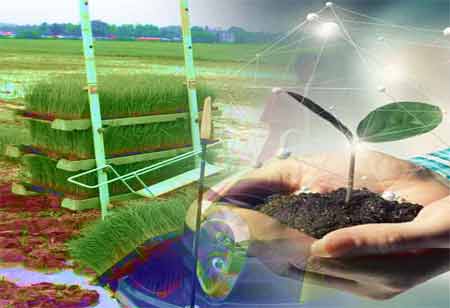Thank you for Subscribing to Energy Business Review Weekly Brief
The Future of Energy Storage and Distribution Logistics

By
Energy Business Review | Monday, April 22, 2024
Stay ahead of the industry with exclusive feature stories on the top companies, expert insights and the latest news delivered straight to your inbox. Subscribe today.
The Asia-Pacific region integrates renewable energy sources like solar and wind into power grids, exploring battery storage and logistics innovation for cost reduction.
FREMONT, CA: The Asia-Pacific (APAC) region is undergoing a notable evolution in its energy sector, driven by concerns over climate change and escalating energy needs. This shift is towards renewable energy sources and more effective distribution frameworks, emphasizing energy storage and logistics advancements.
The Emergence of Renewable Energy and Storage Challenges
APAC is experiencing a swift expansion in renewable energy platforms such as solar and wind. However, these sources are intermittent, meaning their output fluctuates based on weather conditions. This poses a challenge for integrating them into the power grid and ensuring a consistent energy supply. Consequently, energy storage solutions play a pivotal role in bridging this variability.
Among these solutions, battery storage is the most promising technology in the APAC region. Lithium-ion batteries' affordability and efficiency gains make them increasingly viable for large-scale grid storage. Additionally, pumped-storage hydroelectricity (PSH) remains a significant contender, particularly in areas with geographically suitable conditions.
Logistics Innovation for a Sustainable Future
Efficient storage and distribution of stored energy are critical imperatives in the energy landscape. In the coming years, several trends emerge to address these challenges:
Decentralized Storage and Microgrids: Reliance on centralized power plants has been abandoned, and the focus has shifted towards distributed energy storage solutions such as rooftop solar panels paired with battery backups. This approach empowers remote communities and enhances grid resilience.
Smart Grid Integration: Integrating intelligent systems with storage facilities is poised to revolutionize energy distribution by minimizing losses and optimizing efficiency. Smart grids equipped to predict demand fluctuations and manage energy flow represent a significant advancement in this regard.
Advanced Logistics Management: It will be paramount to ensure the seamless transportation and storage of battery components and Pumped Storage Hydro (PSH) infrastructure. This may entail leveraging autonomous vehicles, adopting enhanced warehousing solutions, and implementing efficient recycling processes for spent batteries. Such initiatives are poised to streamline logistics and bolster the sustainability of energy storage systems.
The APAC region encompasses distinct challenges and prospects in energy storage and distribution logistics. In developing economies such as India and Indonesia, ensuring the affordability and accessibility of storage solutions is a pivotal concern, often necessitating government subsidies and exploring innovative financing models. Moreover, the geographical diversity within APAC demands adaptable strategies; for instance, pumped-storage hydroelectricity (PSH) may prove suitable for nations with mountainous terrains, whereas battery storage could be more pragmatic for densely populated urban areas. Additionally, substantial investments in grid infrastructure are imperative across many APAC countries to effectively integrate renewable energy sources and storage technologies into existing systems.
The potential for energy storage and distribution logistics in the APAC region is substantial. With continuous advancements in battery technology, the costs associated with storage are anticipated to decrease, thereby enhancing the competitiveness of renewable energy sources. Establishing a resilient logistics ecosystem will be paramount to facilitate these solutions' effective deployment and upkeep.






